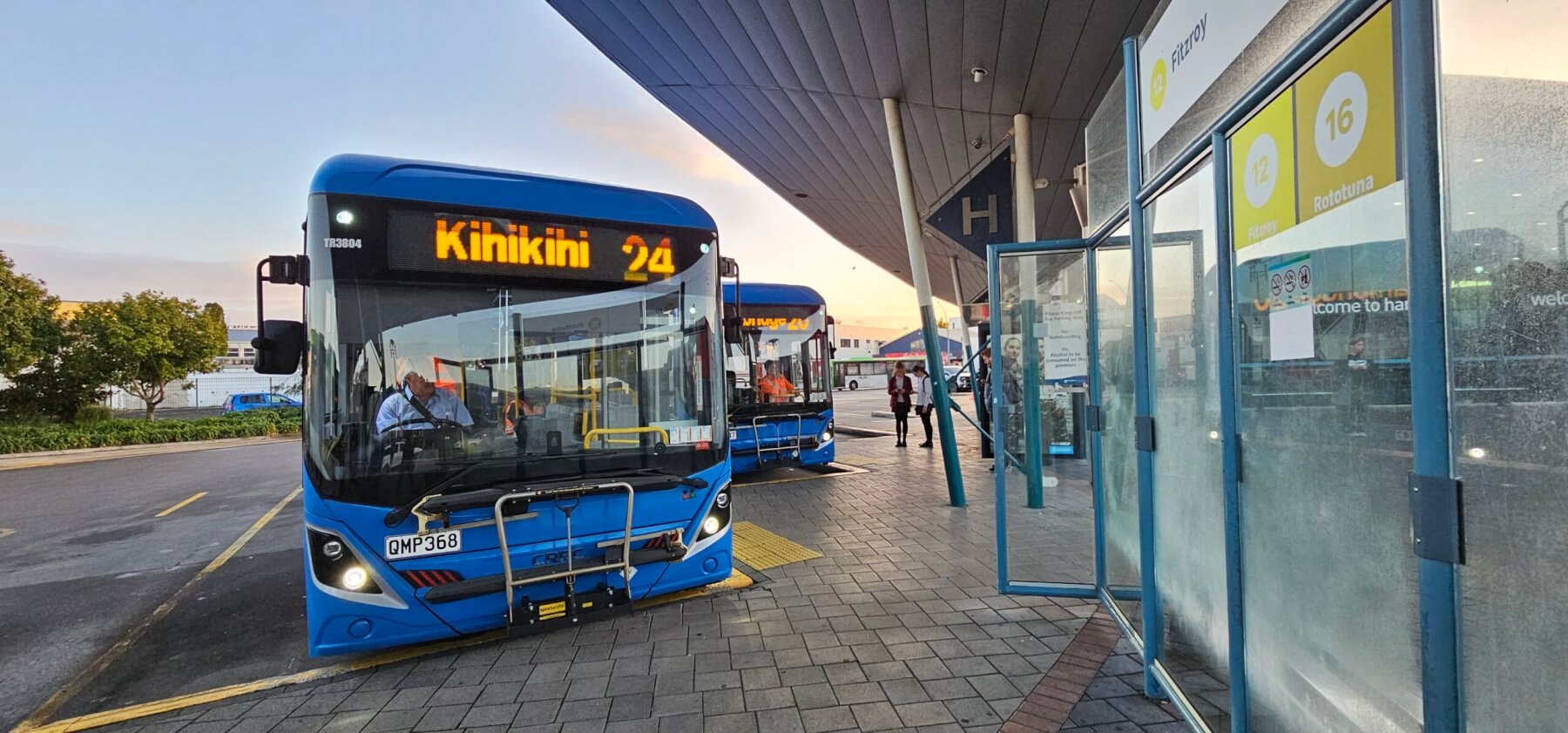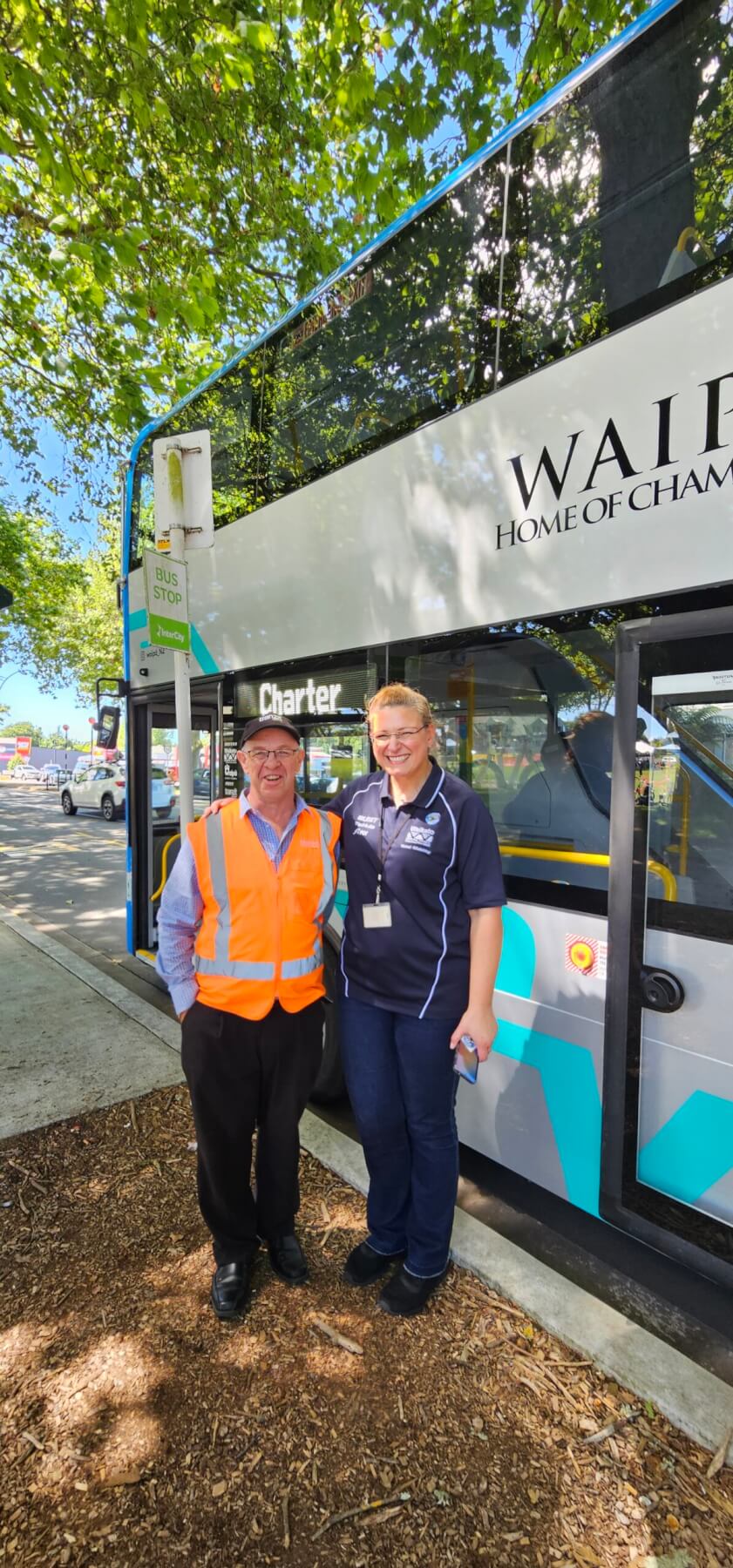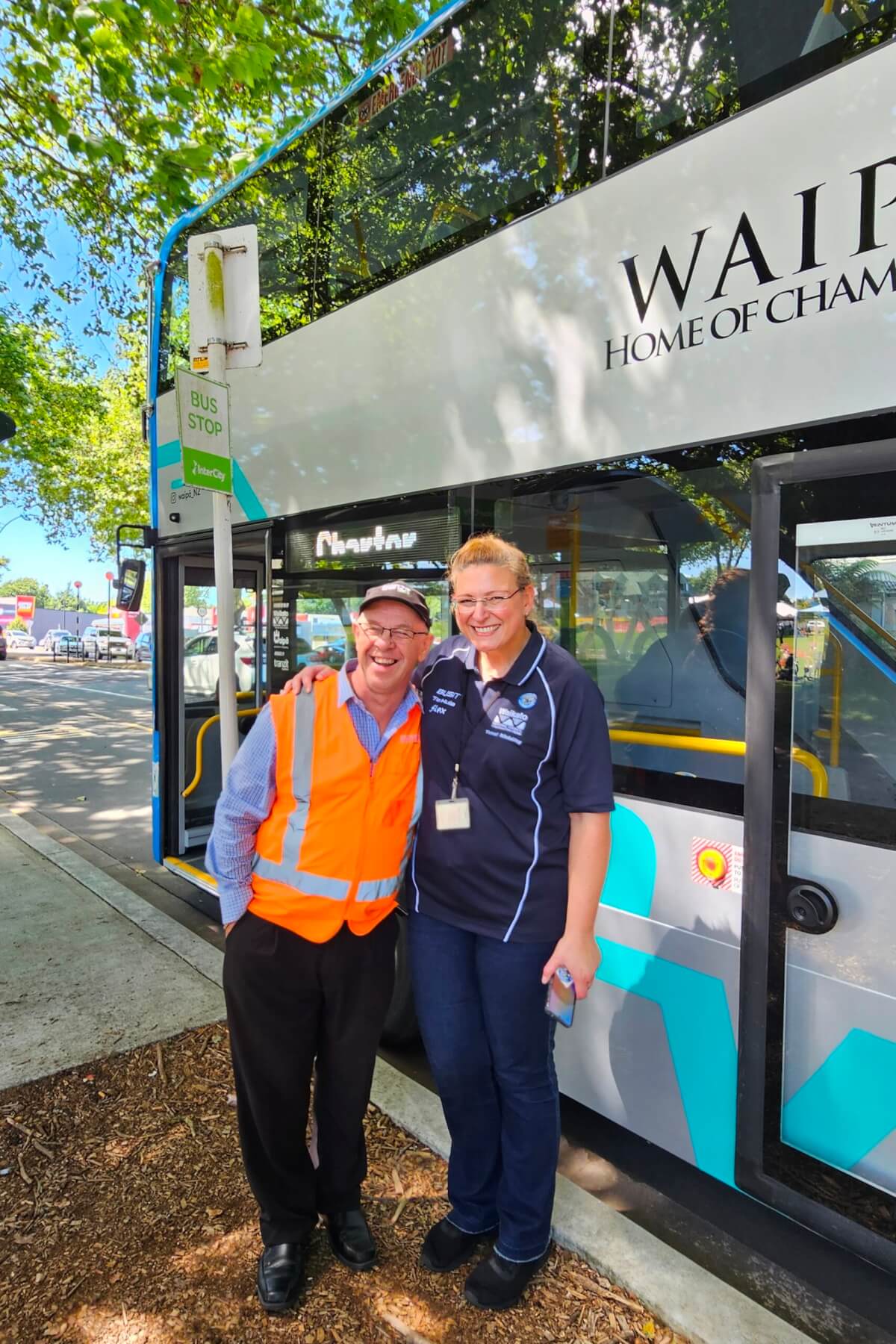The investment made into Waikato public transport is bearing fruit with the numbers of people catching the bus last year from regional towns to and from Hamilton well up on 2023.

Passengers on the regional bus service.

Early morning in Te Awamutu and the buses line up to take students into Hamilton.
The big mover was the Cambridge 20 service. Passenger numbers rose 33 per cent to 118,303 and August’s 13,731 head count nabbed the monthly record.
Te Awamutu-Kihihiki 24 service had more passengers overall though with 127,182 – a 28 per cent increase on the previous year. August was also the big month there with 14,622 people.
While the Te Kūiti and Tokoroa connector services also saw increases – up 55 per cent and 27 per cent respectively – they are coming off a low base and do not include January 2023 when the services were not operating.
Regional and district councillors in those communities will have some tough decisions to make about the services’ viability in an election year where funding is tight.
Both services – Te Kūiti 24 with 10,095 passengers and Tokoroa 32 with 11,118 – only run on weekdays. They leave early in the morning and return later in the afternoon. They pick up and drop off passengers in Ōtorohanga, Kihikihi, Te Awamutu and Cambridge which are included in the connector services figures.

On the (Regional) buses, the Te Awamutu 24

On the (Regional) buses, Cambridge 20
Cambridge and Te Awamutu have both benefited from the introduction of electric buses and a doubling of weekly services while an increase in bus fares from July 1 last year did not appear to have the impact experts predicted.
Maximum fares capped at $43.20 a week seem to have dealt to those fears.
But numbers released to The News show there is still room for growth particularly with cross town patronage in Cambridge – between the CBD and Leamington – and between Te Awamutu and Kihikihi.
Regional council Customer Focus team leader Sandra Sesto-Dekic is confident those numbers can increase particularly given the new double decker buses operating on both sides of the Waipā district.
As part of its 10-year plan for public transport, regional councillors signed off on a plan for services to become carbon neutral by 2050 and spend up to $225 per person annually on public transport.

Cambridge-based driver Craig Matthews with Waikato Regional Council’s Customer Focus team leader Sandra Sesto-Dekic and the new electric double-decker bus. Photo: Mary Anne Gill.

Cambridge-based driver Craig Matthews with Waikato Regional Council’s Customer Focus team leader Sandra Sesto-Dekic and the new electric double-decker bus. Photo: Mary Anne Gill.









